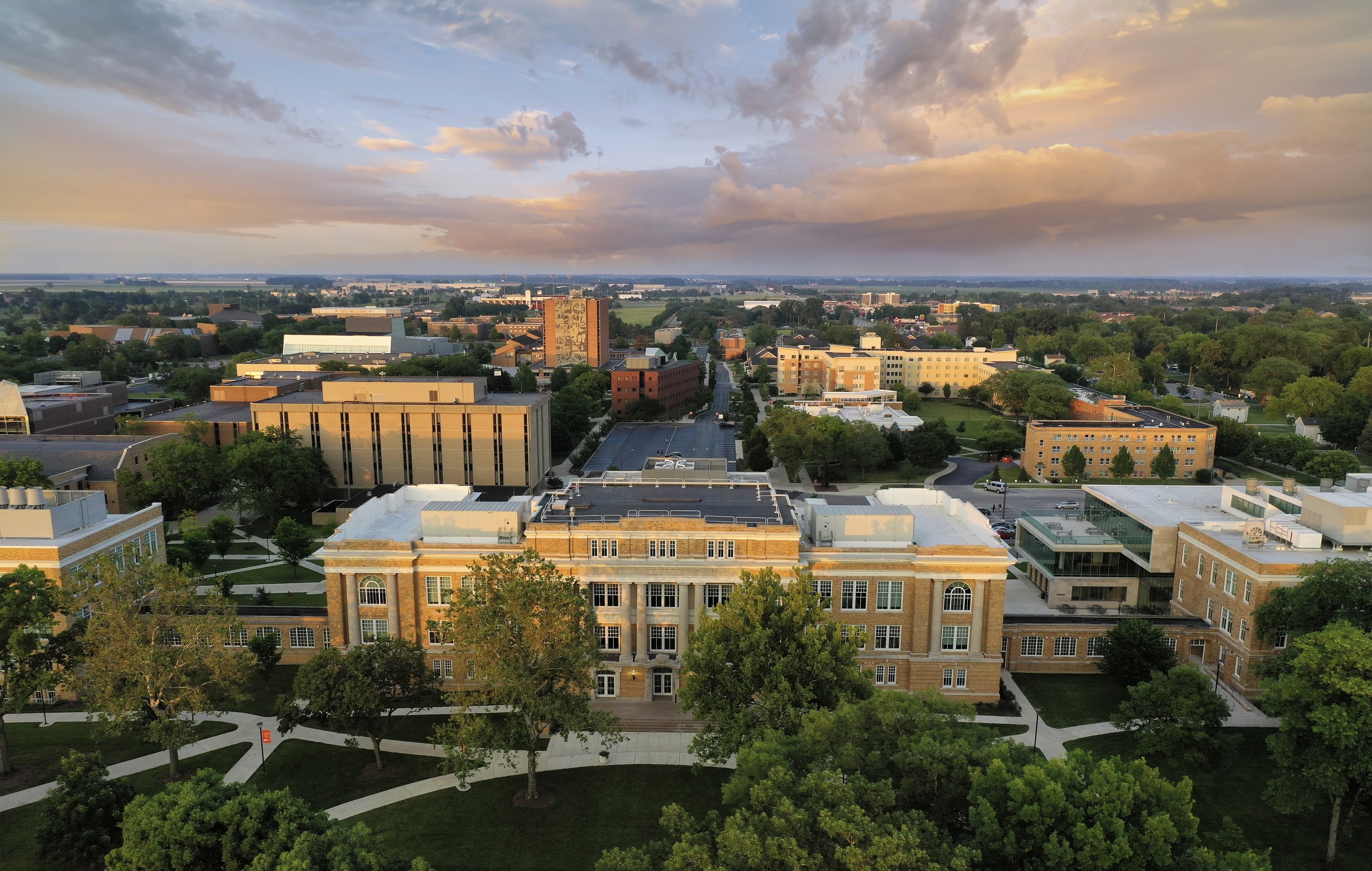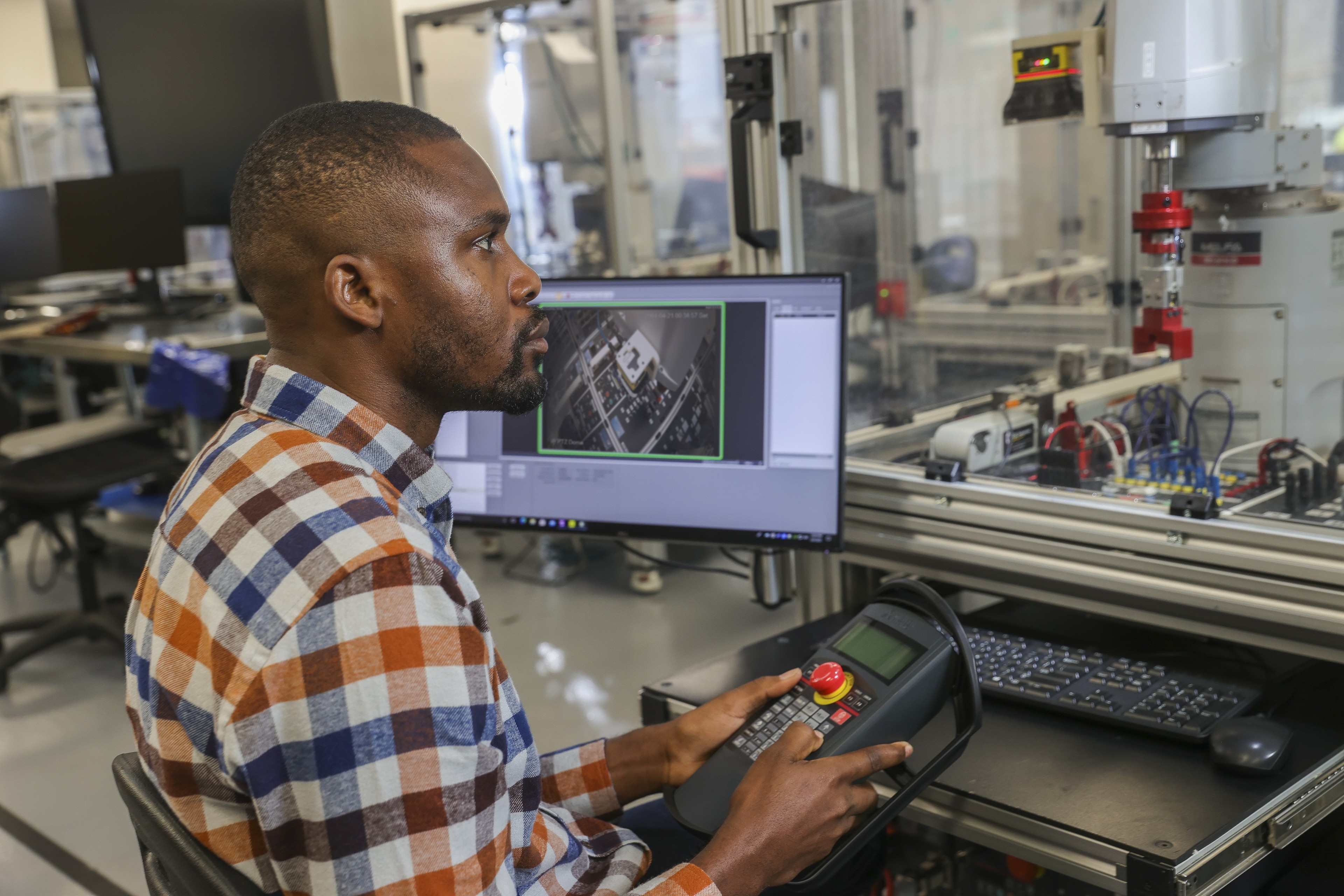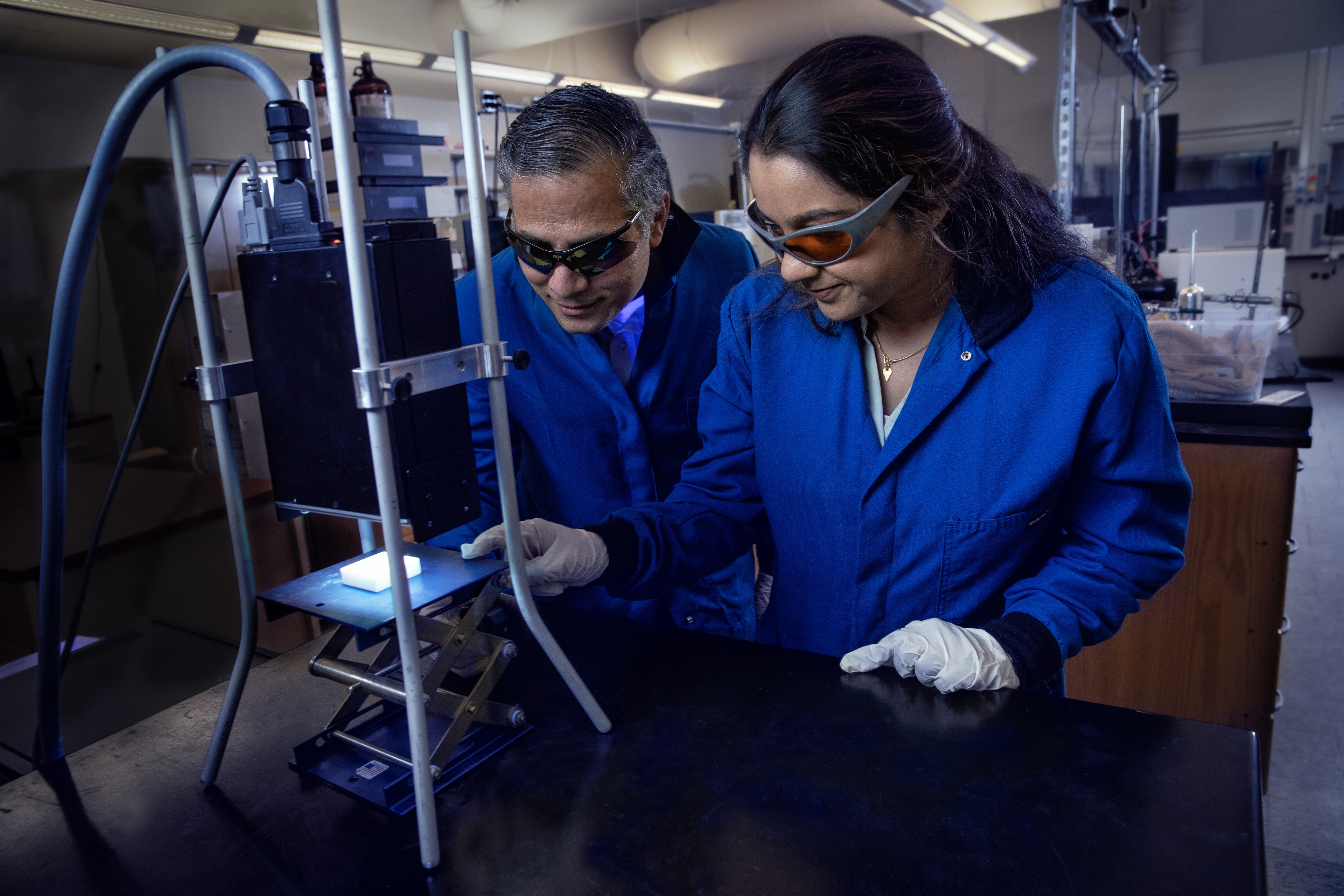
BGSU partners on $31.3M innovation hub poised to strengthen Ohio's economy, create jobs

Leveraging the University’s research expertise, the Northwest Ohio Glass Innovation Hub will bolster economic growth and technological progress in Ohio
Committed to strengthening Ohio’s economy through innovation, Bowling Green State University, The University of Toledo, and regional public and private entities are leveraging their combined industry and research expertise to establish an innovation hub expected to create 1,600 jobs and a $284 million economic impact during the next seven years.
The Northwest Ohio Glass Innovation Hub, funded through a $31.3 million grant from the Innovation Hubs program administered by the Ohio Department of Development, will build upon the region’s existing industrial and research capabilities to solidify Ohio as a global leader in glass technology.
With industry-led research backed by the region’s anchor institutions, the Glass Innovation Hub also is expected to increase state tax revenue by $25 million and produce more than 200 new graduates working in science, technology, engineering and math fields to meet surging workforce demands.
The state funds will be matched by $10.4 million in cost-sharing funds from private sector industry and public sector universities, economic development organizations and community foundations.
The regional initiative, announced on July 1 by Ohio Gov. Mike DeWine at O-I Glass headquarters in Perrysburg, underscores the University's commitment to driving economic vitality in northwestern Ohio and beyond through public-private partnerships, world-class research, in-demand academic programs and workforce development.
"Northwest Ohio is world-renowned for its innovation and leadership in glass, and in further leveraging the power of two research universities, each anchors of our region with unique areas of expertise, this grant will serve as a catalyst in harnessing the advanced technologies of the future for our region’s glass industry,” said BGSU President Rodney K. Rogers. “This collaboration, led by industry and bolstered by higher education, will drive prosperity for our region and state, strengthening our future as the leading global hub of glass technologies, attracting talent from around the world and demonstrating the power and relevancy of higher education for a strong and vibrant economy."
The Glass Innovation Hub is a transformative initiative established by the Northwest Ohio Innovation Consortium (NOIC) to bolster economic growth and technological progress in Ohio by combining the expertise and knowledge of the region’s leaders in advanced manufacturing, solar, glassmaking, academia, labor and economic development.
As a comprehensive research university, BGSU will lend expertise through top researchers in its internationally recognized Center for Photochemical Sciences and Departments of Physics and Chemistry in the areas of specialized coatings and applications in automotive, photo and electrochromic glass, solar and glass industries.
Recent projects by leading BGSU researchers Dr. Jayaraman Sivaguru and Dr. Joe Furgal demonstrate the University's strength in these areas and related processes and technologies.
Sivaguru, a Distinguished BGSU Professor and associate director of the Center for Photochemical Sciences, pioneered research in enhancing the durability, UV resistance and performance of electronically dimmable protective eyewear—processes and technologies that can be similarly applied to glass.
Furgal, an assistant professor of chemistry at BGSU, developed an award-winning coating system to extend the life of multiple surfaces subjected to high levels of erosion, including glass and various other common building materials such as stone, steel, iron, concrete, brick and wood, vital to the mission of the Glass Innovation Hub.
The BGSU School of Engineering will leverage its world-class faculty, robotics and advanced manufacturing technology to develop innovative processes that improve manufacturing efficiencies by integrating AI and machine learning.
As a conduit between industry, higher education and economic development, the Center to Advance Manufacturing, established by BGSU, Owens Community College and the University of Findlay, will offer additional expertise in overcoming manufacturers’ workforce, policy, supply chain, operations and sustainability challenges.
Additionally, the nationally ranked BGSU Schmidthorst College of Business and Office of Technology Transfer and Services will contribute entrepreneurial expertise and help commercialize any new creations, discoveries or innovations from the Glass Innovation Hub.
“From the early days of consumer glassware to today’s highly efficient thin-film solar panels, Toledo has been a leader in glass manufacturing, and The University of Toledo has been supporting this industry through advances in research and development, particularly in photovoltaics innovation,” UToledo Interim President Matt Schroeder said. “We are excited to leverage our University’s expertise and industry partnerships to drive the northwest Ohio economy forward and further position this region for growth through both research partnerships and educating the next generation of advanced degree graduates.”
Public-private partnerships
Industry partners leading the initiative alongside BGSU and UToledo include O-I Glass, a leader in container glass; Owens-Corning, a building materials leader; NSG Pilkington North America, a major supplier to the domestic solar, automotive and construction industries; Libbey Glass, a leading glass manufacturer; and First Solar, the largest manufacturer of domestic solar panels.
Additional NOIC collaborators include community foundations, regional government leaders and economic development organizations.
Roger Smith, who has more than 40 years of experience in glass and related industries, will serve as the project’s principal investigator and NOIC’s president. CelSian USA, a Netherlands-based company that recently opened its U.S. operations at UToledo’s Business Incubator, will provide project management support.
Smith emphasized the significance of the Ohio Department of Development’s investment in bolstering the region’s status as a global leader in glass innovation.
"Research and development expertise within regional higher education partners build and maintain the critical pathways needed to grow and sustain a regional economy’s critical mass of industry expertise," Smith said. "Considering the accelerating changes within this region’s glass, solar and advanced manufacturing industries, higher education partners create and grow the vital talent and community ecosystems that are the lifeblood of thriving and evolving regional ventures. Conducting research aligned with local industry needs is critical to drive those industries forward at the speed necessary to stay in the lead globally."
Vital to the nation's economy, glass is a foundational material in modern life and numerous other industries, including energy, construction, aerospace and defense, automotive and more.
Why glass?
Toledo has been known as the “Glass City” for over a century as the headquarters of several major glass manufacturers. Vital to the nation’s economy, glass is a foundational material in modern life and numerous other industries, including energy, construction, aerospace and defense, automotive, telecommunications, electronics and food and beverage packaging.
According to the Glass Manufacturing Industry Council, more than 100,000 people in the U.S. work in the $30 billion glass manufacturing industry.
Glass is a primary component in solar panels; therefore, innovations in glass, such as reducing its weight, cost and carbon footprint, directly benefit the solar panel industry, which is a significant part of the regional economy.
The Toledo region also is home to a broader group of complementary industries, including furnace builders, testing labs and engineering firms, further demonstrating its strategic reliance on the glass industry.
“Glass innovation is in our region’s DNA,” said Dr. Nichole Fifer, director of the BGSU Center for Regional Development. “The Toledo region has a long history and expertise in glass, and innovations developed through the Glass Innovation Hub have the potential to create a significant economic impact in Ohio, nationally and globally.”
Glass Innovation Hub ecosystem
The Glass Innovation Hub ecosystem offers a multifaceted approach to driving innovation and includes three distinct components: a talent development platform, industry-aligned applied research and the Glass Center of Excellence of Ohio.
To build an advanced regional talent pipeline, NOIC is partnering with educational leaders, elementary to doctoral students, world-renowned professors and industry to offer a summer glass academy, co-ops and internships leveraging strong STEM programs at BGSU and UToledo and capstone research projects for undergraduate and graduate students.
Beginning this fall, BGSU is offering three engineering programs in robotics engineering, electronic and computer engineering and mechanical and manufacturing engineering. The innovative programs will equip students with a comprehensive education that pairs the fundamentals of engineering design with strong foundations in math and science.
NOIC also plans to establish an advanced apprenticeship pipeline to standardize the credentialing curricula, focusing on producing more qualified candidates for manufacturing production and skilled maintenance regardless of age or education level.
The Glass Center of Excellence of Ohio, located at the O-I Glass Perrysburg campus, offers comprehensive support to new companies through centralized facilities, lab space, use of scientific tools and connections to venture capital, accelerating innovation in glass technologies and establishing a thriving ecosystem based in northwestern Ohio with national and global relevance.
Related Stories

BGSU faculty and staff attain major boost in research funding during 2024
In 2024, BGSU researchers have secured more grant awards to fund relevant research in a variety of fields.

BGSU helps regional manufacturers adapt to advances in smart manufacturing through microcredential training program
BGSU was among 11 recipients nationwide and the only in Ohio to receive a $333,000 grant from the U.S. Economic Development Administration to meet regional workforce needs.

BGSU researchers’ bio-based photocuring technology garnering attention of top U.S. companies
Dr. Jayaraman Sivaguru and BGSU graduate student Sruthy Baburaj have generated interest in their bio-based photocuring technology through the National Science Foundation Innovation Corps program.
Media Contact | Michael Bratton | mbratto@bgsu.edu | 419-372-6349
Updated: 12/02/2024 05:34PM








